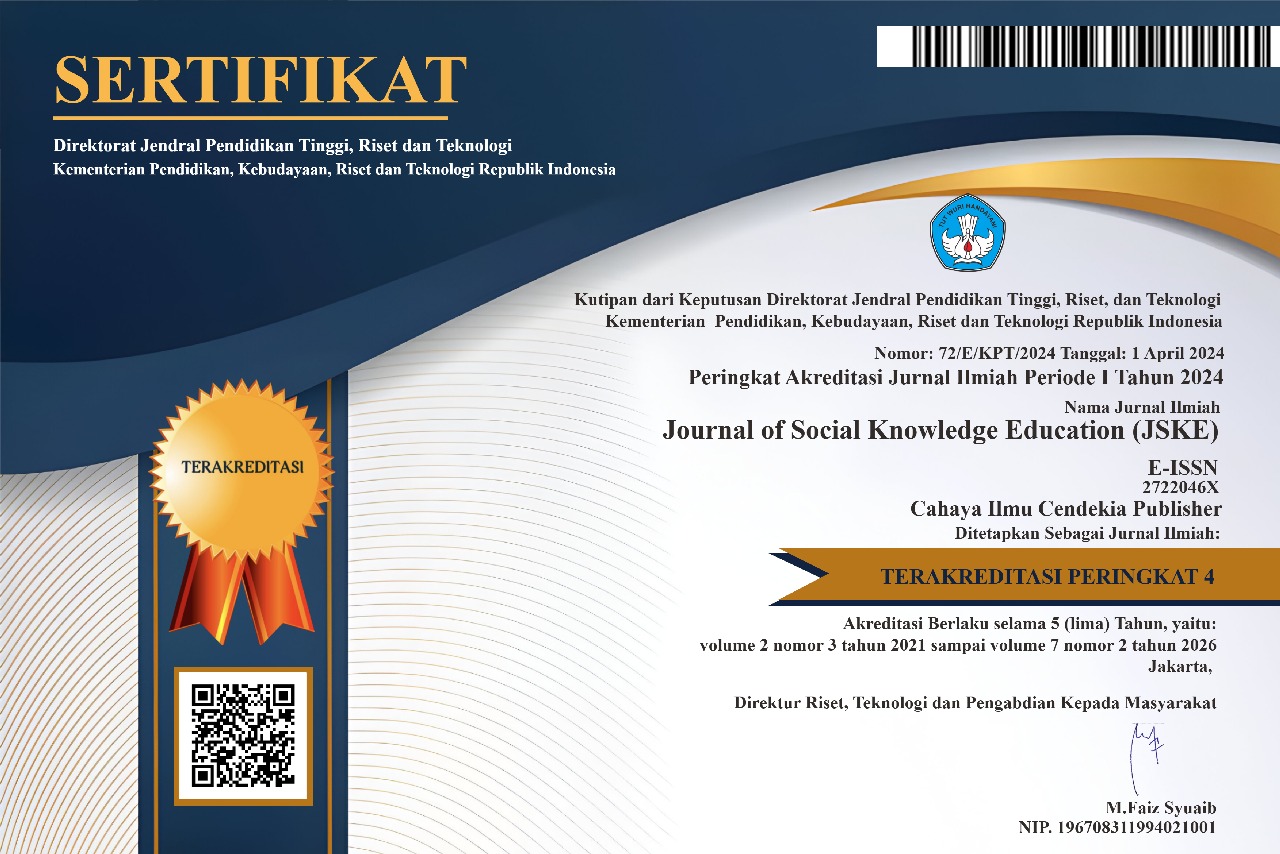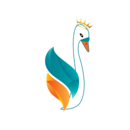Efforts to Improve History Learning Outcomes by Using Creative and Productive Learning Models
Abstract
Purpose of the study: The aim of this research is to determine students' history learning outcomes by applying creative and productive learning models.
Methodology: This research is classroom action research carried out in two cycles. Each cycle consists of four stages, namely planning, action, observation, reflection. The research subjects were class X high school students. The data collection tools or instruments used in this classroom action research are written test or evaluation instruments to reveal student learning outcomes and observation sheets regarding understanding of student activities and teacher performance. Data analysis is carried out statistically by calculating the average value obtained then the second stage calculate learning completeness.
Main Findings: The learning outcomes obtained by students in cycle I showed an improvement compared to before they were given learning using creative and productive models. In cycle II, student learning outcomes showed a better improvement compared to cycle I. Student learning outcomes in cycle II were as follows: the percentage of completion level in cycle II was 84.61%, while students who did not complete the percentage were 15.38. %. So the overall class average is 7.82. The conclusion of this research is that by using the Creative and Productive Learning model there is an increase in learning outcomes on the subject of the origins and distribution of humans in the Indonesian Archipelago.
Novelty/Originality of this study: The novelty of this research is that it is useful in the field of education, especially in history subjects as an effort to improve the completeness of student learning outcomes.
References
[2] M. Mustopa, “Kebudayaan Dalam Islam: Mencari Makna Dan Hakekat Kebudayaan Islam,” J. Tamaddun J. Sej. dan Kebud. Islam, vol. 5, no. 2, pp. 22–35, 2017, doi: 10.24235/tamaddun.v5i2.2121.
[3] C. B. Siswati, Utomo, and A. Muntholib, “Implementasi Pendidikan Karakter dalam Membentuk Sikap dan Perilaku Sosial Peserta Didik Melalui Pembelajaran Sejarah di SMA PGRI 1 Pati Tahun Pelajaran 2017/2018,” Indones. J. Hist. Educ., vol. 6, no. 1, pp. 1–13, 2018.
[4] A. Astalini, D. A. Kurniawan, and S. Sumaryanti, “Sikap Siswa Terhadap Pelajaran Fisika di SMAN Kabupaten Batanghari,” JIPF (Jurnal Ilmu Pendidik. Fis., 2018, doi: 10.26737/jipf.v3i2.694.
[5] F. T. Aldila, E. F. S. Rini, S. W. Octavia, N. N. Khaidah, F. P. Sinaga, and N. Septiani, “The Relationship of Teacher Teaching Skills and Learning Interests of Physics Students of Senior High School,” Edufisika J. Pendidik. Fis., vol. 8, no. 1, pp. 101–105, 2023, doi: 10.59052/edufisika.v8i1.24864.
[6] A. Busyaeri and M. Muharom, “Pengaruh Sikap Guru Terhadap Pengembangan Karakter (Peduli Sosial) Siswa Di Mi Madinatunnajah Kota Cirebon,” Al Ibtida J. Pendidik. Guru MI, vol. 2, no. 1, pp. 1–17, 2016, doi: 10.24235/al.ibtida.snj.v2i1.177.
[7] A. Setiya Ningrum, N. Lestari, and K. Kusmiyati, “Perbedaan Hasil Belajar Ipa Biologi Menggunakan Model Pembelajaran Kooperatif Tipe Team Assisted Individualization Dengan Tipe Mind Mapping Pada Siswa Kelas Vii Smp Negeri 19 Mataram,” J. Pijar Mipa, vol. 13, no. 1, pp. 37–44, 2018, doi: 10.29303/jpm.v13i1.467.
[8] Nurdyansyah and E. F. Fahyuni, Inovasi Model Pembelajaran. 2016.
[9] E. F. Setiya Rini, D. Darmaji, and D. A. Kurniawan, “Identifikasi Kegiatan Praktikum dalam Meningkatkan Keterampilan Proses Sains di SMPN Se-Kecamatan Bajubang,” Edukatif J. Ilmu Pendidik., vol. 4, no. 2, pp. 2476–2481, 2022, doi: 10.31004/edukatif.v4i2.2360.
[10] Astalini et al., “Impact of Science Process Skills on Thinking Skills in Rural and Urban Schools,” Int. J. Instr., vol. 16, no. 2, pp. 803–822, 2023.
[11] S. Syahrial, D. A. Kurniawan, A. Asrial, H. Sabil, S. Maryani, and E. F. S. Rini, “Professional Teachers: Study of ICT Capabilities and Research Competencies in Urban and Rural?,” Cypriot J. Educ. Sci., vol. 17, no. 7, pp. 2247–2261, 2022, doi: 10.18844/cjes.v17i7.7590.
[12] F. E. Saputro, “The Role of Islamic Religious Education Teachers in Actualizing Tolerance Attitudes To Students,” AL-ISHLAH J. Pendidik., vol. 12, no. 2, pp. 336–347, 2020, doi: 10.35445/alishlah.v12i2.214.
[13] N. M. A. S. Paramita, N. W. Rati, and N. K. D. Tristiantari, “Pengaruh Model Pembelajaran Picture and Picture Berorientasi Pendidikan Karakter terhadap Motivasi Belajar IPS Siswa Kelas V,” J. Educ. Technol., vol. 3, no. 1, pp. 1–8, 2019, doi: http://dx.doi.org/10.23887/jet.v3i1.17957.
[14] A. Prihantoro and F. Hidayat, “Melakukan Penelitian Tindakan Kelas,” Ulumuddin J. Ilmu-ilmu Keislam. /, vol. 9, no. 1, 2019.
[15] A. Azizah, “Pentingnya Penelitian Tindakan Kelas Bagi Guru dalam Pembelajaran,” Auladuna J. Prodi Pendidik. Guru Madrasah Ibtidaiyah, vol. 3, no. 1, 2021.
Copyright (c) 2023 Sandika Priatmoko, Jimoh Adeniyi Alabi, Sung Ku Hong

This work is licensed under a Creative Commons Attribution-NonCommercial 4.0 International License.
Authors who publish with this journal agree to the following terms:
- Authors retain copyright and acknowledge that the Journal of social knowledge education (JSKE) is the first publisher licensed under a Creative Commons Attribution 4.0 International License.
- Authors are able to enter into separate, additional contractual arrangements for the non-exclusive distribution of the journal's published version of the work (e.g., post it to an institutional repository or publish it in a book), with an acknowledgment of its initial publication in this journal.
- Authors are permitted and encouraged to post their work online (e.g., in institutional repositories or on their website) prior to and during the submission process, as it can lead to productive exchanges and earlier and greater citation of published work.






.png)
.png)















